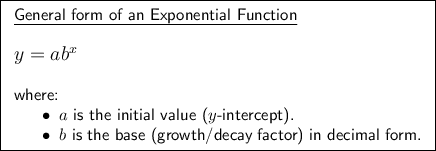Answer:
Initial size of the culture = 128
Doubling period = 7.56 minutes (2 d.p.)
Population after 80 minutes = 195,313 (nearest integer)
Population will reach 15,000 = 51.99 minutes (2 d.p.)
Explanation:
The general form of an exponential function is:

In this case:
- Let x be the time (in minutes).
- Let y be the count of bacteria.
Given that the count in a bacteria culture was 800 after 20 minutes and 2000 after 30 minutes, we can substitute these values into the exponential function formula and set up the following two equations:


To find the base (b), divide the equations to eliminate a:


Now, solve for b:



To find the value of a, substitute the exact value of b into one of the equations:




Therefore, the initial size of the culture was 128.
The equation that models the count of the bacteria after x minutes is:

This can be simplified to:

To find the doubling period given that the initial size of the culture was 128, set y = 256 and solve for x:







Therefore, the doubling period is 7.56 minutes (rounded to 2 decimal places).
To find the population after 80 minutes, substitute x = 80 into the equation and solve for y:




Therefore, the population after 80 minutes is approximately 195,313 (rounded to the nearest integer).
To determine when the population will reach 15,000, substitute y = 15000 into the equation and solve for x:







Therefore, the population will reach 15,000 after 51.99 minutes (rounded to two decimal places).